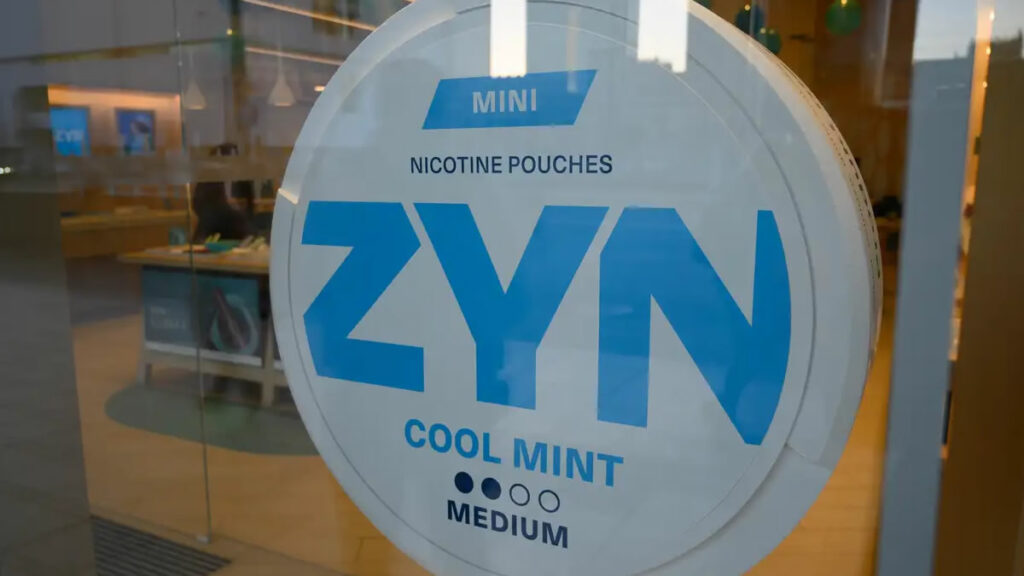With the UK’s ban on disposable vapes set to take effect on June 1, 2025, a significant portion of young adult vapers, particularly Gen Z, are facing a shift in how they access nicotine. As popular single-use products like Elf Bars and Lost Marys prepare to exit legal retail, attention is turning towards potential alternatives. One product rapidly gaining traction and visibility is Zyn, a brand of oral nicotine pouches, sparking debate about its appeal, risks, and the potential for a new wave of nicotine dependence.
The impending ban on disposable vapes aims to tackle rising youth vaping rates and the considerable environmental waste generated by these single-use items. However, for the nearly one-third of UK 18-24-year-olds who reported using e-cigarettes in 2023 (a sharp increase from 9% in 2021, according to University College London research), the change necessitates finding new options or quitting.
What is Zyn and Why the Sudden Buzz?
Zyn is a brand of Swedish-style nicotine pouches. These are small, discreet sachets containing nicotine, flavorings, and fillers, but no tobacco leaf. Users place the pouch between their upper lip and gum, allowing nicotine to be absorbed directly into the bloodstream through the oral mucosa. This delivery method is often described as providing a faster and sometimes more intense “buzz” compared to vaping.
The appeal for Gen Z, and potentially other nicotine users looking for alternatives post-disposable ban, seems to stem from several factors:
- Discreetness: Unlike vaping, which produces a visible aerosol cloud, nicotine pouches are virtually unnoticeable when in use. This allows for consumption in places where vaping or smoking is prohibited or socially unacceptable, such as classrooms, public transport, or even in front of parents without easy detection.
- Ease of Access (Currently): Nicotine pouches are widely available in the UK, sold in supermarkets like Sainsbury’s and through numerous online retailers, making them easily obtainable.
- Perceived Stronger/Faster Hit: The direct mucosal absorption can lead to a quicker onset of nicotine effects for some users. While a vape might deliver around 20mg of nicotine over its lifespan (depending on the product), nicotine pouches come in various strengths, typically ranging from around 3mg to 20mg per pouch. However, illicit or unregulated versions can contain significantly higher, potentially dangerous levels – some reports mention up to 50mg, which is substantially more than a traditional cigarette.
- Social Media Influence: The popularity of Zyn has been significantly amplified by social media. Influencers, like 23-year-old YouTuber Emma Chamberlain and 26-year-old LA influencer Tana Mongeau (with 8.7 million TikTok followers), have been seen using or discussing the product, exposing it to millions of young followers. Comments on such posts often suggest Zyn as an alternative to vaping, further fueling curiosity and trial.
Market reports indicate a rapid growth in nicotine pouch sales in the UK, with 92 million units sold in 2022 and a further 55% increase in 2023, underscoring their rising popularity and market penetration.
Health Concerns and Regulatory Landscape
While nicotine pouches are tobacco-free and avoid the respiratory risks associated with inhaling smoke or even vape aerosol, they are not without health concerns. Dr. Donna Shelley, professor and vice dean for research at the New York University School of Global Public Health, highlighted to NBC News that potential negative health effects include gastrointestinal issues like nausea, as well as significant oral health problems such as gum soreness and ulcers. Cardiovascular risks, like an elevated heart rate due to nicotine’s stimulant properties, are also a concern. “We don’t know the full safety profile yet,” she cautioned, emphasizing the need for more long-term research on these relatively new products.
Crucially, nicotine itself is a highly addictive substance. There are significant concerns that the discreet nature, appealing flavors, and perceived “safety” of pouches could lead to high levels of nicotine dependence, especially among young users whose brains are still developing and are more susceptible to addiction. The ease of continuous use throughout the day, due to their inconspicuousness, could also lead to higher overall nicotine intake.
A significant and growing issue is the rise of an unregulated market for nicotine pouches. A BBC report earlier this year highlighted increasing seizures of illegal nicotine pouches by Trading Standards teams in various UK regions, including Oxfordshire, Berkshire, and Dorset, with over 1,500 seizures in the past year. The Oxfordshire team specifically noted a “significant growth” in illegal pouches containing potentially dangerous and unverified levels of nicotine. These illicit products bypass any quality control or safety standards, posing a serious risk to consumers, particularly children who might inadvertently access them or be targeted by unscrupulous sellers.
The upcoming Tobacco and Vapes Bill in the UK, which includes the disposable vape ban, is also expected to bring products like nicotine pouches under stricter regulatory control. This could involve measures addressing flavoring, packaging, marketing, and ensuring robust age verification for sale, though the final specifics are still being debated and finalized within the legislation.
A Viable Replacement or a New Public Health Challenge?
As the UK moves to phase out disposable vapes, the question remains whether nicotine pouches like Zyn will simply become the next widespread nicotine delivery system for Gen Z, or if the new regulations will effectively curb overall youth nicotine use. While some adult smokers may find pouches a useful tool to switch away from combustible cigarettes entirely, the rapid uptake by young people, fueled by social media trends and the products’ inherent discreetness, presents a new public health challenge.
The ease with which pouches can be used in restricted environments like schools makes them particularly problematic for youth prevention efforts. The transition from a highly visible behavior like vaping to a nearly invisible one like pouch use could make monitoring and intervention more difficult for parents and educators. Public health officials and regulatory bodies will need to closely monitor usage trends, the impact of the disposable vape ban on pouch uptake, and the effectiveness of any new regulations applied to this rapidly evolving product category to ensure that efforts to protect young people from nicotine addiction are not simply outpaced by market innovation and shifting youth preferences.
- Azerbaijan to Ban Electronic Cigarettes: Import, Sale & Use - December 18, 2025
- Malaysia Confirms Plan for Full Vape & E-Cigarette Ban - December 18, 2025
- Ireland Introduces Bill to Ban Single-Use Vapes in Dáil - December 18, 2025


